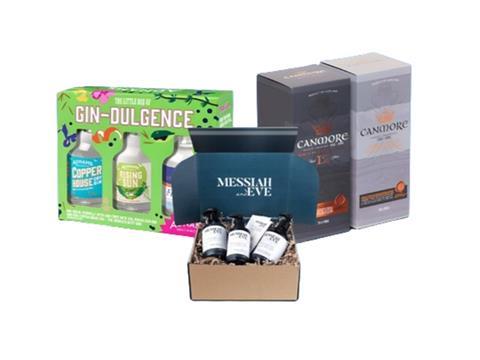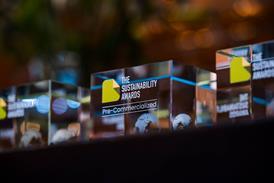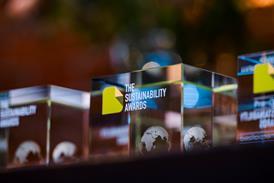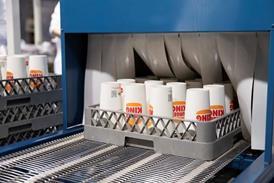
With 2024 under way, Smurfit Kappa details its vision for premium packaging in the coming months – minimalist, personalized, and sustainability-minded designs that tell a story and engage consumers in an immersive experience.
Premium packaging plays a crucial role in shaping consumer perceptions and influencing purchasing decisions. In the competitive world of consumer goods, packaging acts as a compelling ambassador for a brand.
Premium packaging has recently seen some very exciting developments, and 2024 promises to be a year of creativity and innovation, with even more focus on sustainability.
As consumer preferences evolve and brands continue to pursue unique ways to stand out in an increasingly competitive marketplace, packaging design is becoming an important vehicle for engagement, personalization, and storytelling. We’re committed to helping you embrace these new trends by ensuring your packaging doesn’t hold you back in 2024 but drives your business forward.
Let’s dive into the top five trends that are set to shape the future of premium packaging for 2024 and beyond:
1. Emphasis on brand storytelling
Packaging is no longer merely a container for a product. Instead, it’s a versatile canvas for brand storytelling.
This storytelling approach goes beyond simply printing brand slogans or logos. It involves shaping a narrative that resonates with the target audience and establishes an emotional connection.
Research has found that when consumers engage with brand storytelling, they undergo deeper cognitive processing and experience heightened positive emotions (Emerald Insight). This results in a more favourable attitude towards the brand.
Luxury packaging is set to add to the overall user experience by immersing customers in their brand narrative. Premium brands are recognizing the powerful potential of packaging to communicate their unique identity, values, and heritage. Brands can establish vital connections with consumers, by using eye-catching designs, carefully chosen sustainable materials, and interesting details.
From embossed motifs to ‘secret’ or hidden messages, interactive components and enticing illustrations – each element of a premium packaging unboxing experience offers an opportunity to share a carefully crafted brand story. Creating a personal and immersive journey builds anticipation, deepens brand engagement and loyalty and ultimately enhances the product’s perceived value.
2. Interactive packaging
Imagine being able to virtually sample an entire range of your favourite brand’s new collection. By combining physical elements with digital content, luxury brands can immerse their customers in a memorable and shareable experience that instantly brings their products to life.
Interactive packaging will become a prominent trend in 2024. It’s a way to intrigue and delight consumers with premium product packaging for gifts that goes beyond the traditional box or bottle.
Pull-out compartments, augmented reality experiences or hidden messages can transform the unboxing experience into an engaging and memorable event. QR codes can provide personalized product information, exclusive content, or interactive games, further enhancing and elevating the consumer experience.
The more consumers enjoy and engage with your packaging, the more likely they will share their experiences and spread the word about your brand online and in their social circles.
These interactive elements transform packaging from a passive container into an active participant in the consumer’s journey. They can provide additional product information, offer personalized experiences, or even gamify the unboxing process.
This interactive approach promises to be increasingly popular with Gen Z, those born between 1997 and 2012, who are becoming a progressively active and engaged customer demographic.
3. Personalization and customization
In the age of personalization, consumers crave products that feel tailor-made. Technology enables premium brands to embrace this trend by offering customized packaging options, such as personalized messages on premium drinks packaging, bespoke colour schemes, or even packaging designs tailored to individual preferences.
A study found that 74.7% of consumers are likely to make repeat purchases from brands that are more personable (IMRG), suggesting the importance of brands embracing personalization and customization in their packaging to elevate customer experience. Personalization encourages a sense of exclusivity and strengthens the emotional bond between the brand and the consumer. It demonstrates that the brand values its customers and will go the extra mile to provide a premium experience.
Manufacturers use personalized packaging more frequently to improve the consumer impression of the brand and increase customer interaction, especially for newer companies embarking on the customer journey for the first time – thus resulting in consumers who are more inclined to share their personalized packaged products or feature them on their social media channels, which can ultimately help boost brand awareness and sales. The importance of the packaging itself and the resulting unboxing experience for consumers is high, with 49.6% of UK shoppers thinking so (Internet Retailing).
4. Minimalistic and elegant designs: refined luxury
According to Ipsos’ research, 72% of shoppers are influenced by a product’s packaging design. Simple and elegant yet powerful product communication streamlined to the essential selling points will be vital to connect with overwhelmed and desensitized consumers.
Minimalist packaging design has surged in popularity, particularly in retail sectors such as luxury products, cosmetics, fashion, and drinks. What makes minimalist packaging truly exceptional is its versatility, easy customization, and applicability across virtually any industry.
The trend towards minimalistic and sophisticated packaging designs is poised to continue in 2024, with brands embracing clean lines, muted colour palettes, and premium finishes to convey a sense of luxury and sophistication. The focus is on simplicity and elegance, allowing the product itself to take centre stage.
Unique materials and finishes, such as velvet-touch coatings, metallic accents, or holographic elements, add a touch of refinement, luxury, and visual appeal without compromising the minimalist aesthetic.
5. Sustainable luxury packaging
Sustainable packaging is increasingly becoming part of consumers’ conscience around the world. With 94% of consumers saying it’s a brand’s responsibility to create products that are not harmful to the Earth, and 61% of consumers believing that they shouldn’t have to think about sustainability while shopping (Deloitte Global), sustainability is no longer a demand but a day-to-day expectation of consumers.
In 2024, we can expect to see premium brands increasingly incorporating sustainable materials into their packaging designs without compromising their luxurious feel.
With 85% of people choosing brands that align with their concerns about climate change and the environment (Ipsos), sustainability will become a must and, in terms of expectations, a basic, not a bonus. Sustainability is no longer a compromise in premium packaging – it’s an essential component for future-proofing.
Eco-conscious consumers expect environmentally responsible products, and premium brands are responding with innovative packaging solutions. See what consumers had to say about the importance of sustainable packaging in one of our recent street interviews here.
Sustainable luxury packaging demonstrates a brand’s commitment to the environment without sacrificing the premium experience that consumers expect. With innovations in eco-friendly packaging materials, such as recycled materials, biodegradable coatings, and water-based inks becoming increasingly common, businesses can demonstrate a commitment to sustainability whilst maintaining the high-end feel that they are known for.
The future of premium product packaging
These five trends represent a paradigm shift in premium packaging, where creativity, technology, and sustainability meet to create immersive and meaningful consumer experiences. As brands strive to differentiate themselves in an increasingly crowded market, packaging design will continue to evolve, pushing the boundaries of innovation, shaping brand perceptions, and influencing consumer decisions. This, in turn, will shape the future of retail.
If you liked this article, you might also enjoy:
The L’Oréal approach to packaging sustainability
The way we talk about plastic needs to change – here’s how to get it right
What steps is Apple taking to make its packaging more sustainable?


















No comments yet